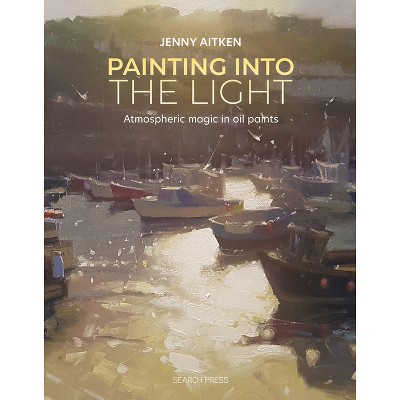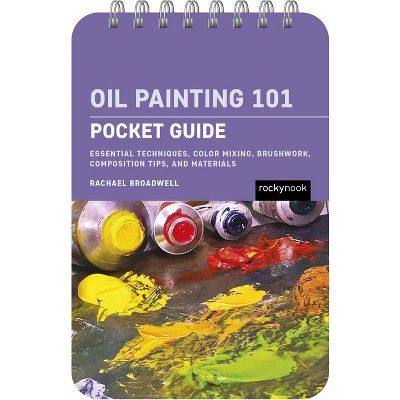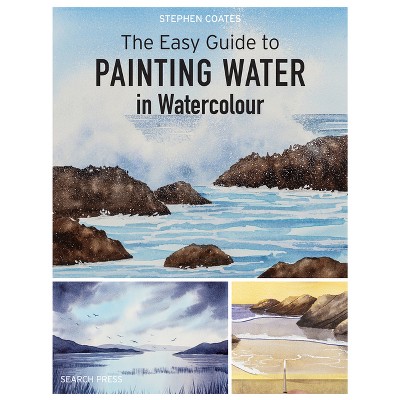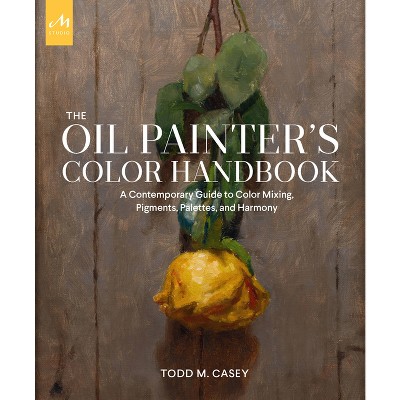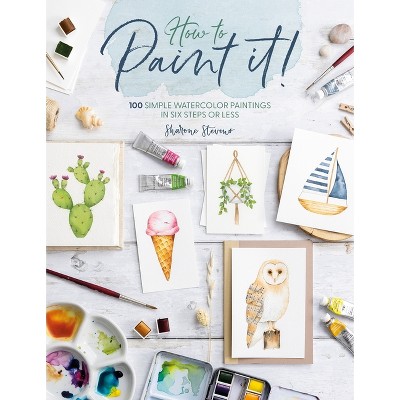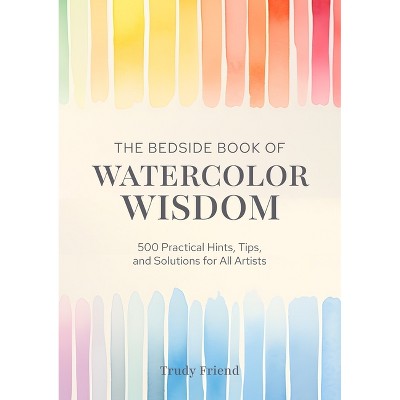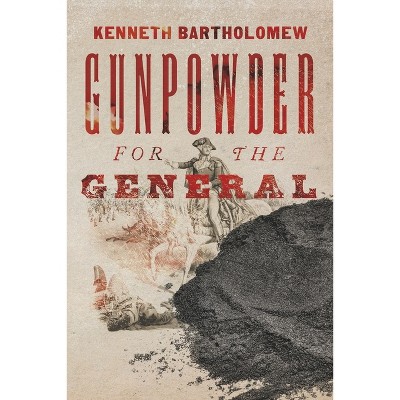$68.99 sale price when purchased online
$85.00 list price
Target Online store #3991
About this item
Highlights
- Creamy and thick impastos; sheer veils of color; rough, skittering strokes: these are some of the effects that can be created with oil paint.
- About the Author: Anthony Apesos is professor emeritus at Leslie University College of Design.
- 328 Pages
- Art, Techniques
Description
About the Book
Creamy and thick impastos; sheer veils of color; rough, skittering strokes: these are some of the effects that can be created with oil paint. Emerging in Northern Europe in the decades around 1400, this simple yet revolutionary mixture of dry pigments and linseed oil transformed Western painting. In many ways, the history of art in Europe is a history of the unfolding potential of oil to manifest artistic visions. Despite the centrality of oil painting to Western art no book has yet been devoted to surveying and understanding it over the 600 years of its development. There are excellent studies that focus on specific periods, but because of their narrow scope, they do not explore the dynamics of the evolution of painterly practice. Drawing on primary texts as well as on numerous specialist studies of individual artists (such as those produced by the Rembrandt Research Project, the Hamilton Kerr Institute, and conservation departments of major museums) this book synthesizes this research with the author's own practical experience working with and recreating historical methods. Beginning with the water-based media in which all the early oil painters were trained, the book explores the vast diversity of applications of the oil medium that proliferated from the sixteenth through the nineteenth centuries. A vital part of the account is close examination of individual paintings, made possible through numerous high-resolution photographs from museums in Europe and the United States. For representative paintings the book provides detailed descriptions of how they were made, inviting the reader into the painting process. After reading the book, viewers will be able to recognize pigments, mediums, supports and methods of paint application; they will learn about cracking, fading, darkening, and a host of other changes in the painted surface in order both to imagine the original appearance of a picture and to interpret particular kinds of deterioration as indicators of hoBook Synopsis
Creamy and thick impastos; sheer veils of color; rough, skittering strokes: these are some of the effects that can be created with oil paint. Emerging in Northern Europe in the decades around 1400, this simple yet revolutionary mixture of dry pigments and linseed oil transformed Western painting. In many ways, the history of art in Europe is a history of the unfolding potential of oil to manifest artistic visions. Despite the centrality of oil painting to Western art no book has yet been devoted to surveying and understanding it over the 600 years of its development. There are excellent studies that focus on specific periods, but because of their narrow scope, they do not explore the dynamics of the evolution of painterly practice. Drawing on primary texts as well as on numerous specialist studies of individual artists (such as those produced by the Rembrandt Research Project, the Hamilton Kerr Institute, and conservation departments of major museums) this book synthesizes this research with the author's own practical experience working with and recreating historical methods. Beginning with the water-based media in which all the early oil painters were trained, the book explores the vast diversity of applications of the oil medium that proliferated from the sixteenth through the nineteenth centuries. A vital part of the account is close examination of individual paintings, made possible through numerous high-resolution photographs from museums in Europe and the United States. For representative paintings the book provides detailed descriptions of how they were made, inviting the reader into the painting process. After reading the book, viewers will be able to recognize pigments, mediums, supports and methods of paint application; they will learn about cracking, fading, darkening, and a host of other changes in the painted surface in order both to imagine the original appearance of a picture and to interpret particular kinds of deterioration as indicators of how the painting was made. This book will be of interest to five audiences:1) The general museum goer. Often fascinated by technical questions when looking at art, the general public has no accessible and accurate place to turn with their questions.
2) Artists. It is shocking to me how much technical information still taught in schools is informed by nineteenth- and twentieth-century recipes for paint mediums that yellow, crack, and can be impossible to restore. Reliable and accurate technical information that is well known to conservators is not readily available to practicing painters. An artist who wants to try historical painting methods will find in my book the source for understanding these.
3) Art history students. Few art history textbooks discuss oil painting technique; none do so in any depth. This book will be a useful supplement for any of the existing surveys of Western art.
4) Art historians. There is a growing trend in art historical literature to reconsider technique as a tool in interpreting paintings. My book will be a valuable source that would provide background for such scholarship.
5) Conservators. The book will also be valuable in the training of conservators, offering an overview of painting methods in an historical narrative. Table of contents: Chapter 1 APPROACHES TO PAINTING
Chapter 2 MATERIALS OF PAINTING
Chapter 3 BEFORE OIL PAINTING
Chapter 4 EARLY OIL PAINTING
Chapter 5 PAINTING ON CANVAS BEFORE 1500
Chapter 6 GIORGIONE AND EARLY TITIAN
Chapter 7 OTHER INNOVATIONS
Chapter 8 LATER TITIAN, VERONESE, AND TINTORETTO
Chapter 9 BAROQUE PAINTING: ITALIAN, SPANISH, FLEMISH, AND DUTCH PAINTERS
Chapter 10 FRANCE, SEVENTEENTH AND EIGHTEENTH CENTURY
Chapter 11 FALLACIES AND REVIVALS AND INNOVATIONS
Chapter 12 INTO THE TWENTIETH CENTURY MODERNISM
About the Author
Anthony Apesos is professor emeritus at Leslie University College of Design. Besides his active engagement as a painter, he has published research on Titian, Caravaggio, and other artists, especially William Blake. His book Anatomy for Artists has been translated into four languages. He is currently working on a companion book to the Long Desired Medium which will provide practical instruction on historical painting techniquesDimensions (Overall): 11.1 Inches (H) x 8.58 Inches (W) x .94 Inches (D)
Weight: 3.39 Pounds
Suggested Age: 22 Years and Up
Sub-Genre: Techniques
Genre: Art
Number of Pages: 328
Publisher: Bookbaby
Theme: Oil Painting
Format: Hardcover
Author: Anthony Apesos
Language: English
Street Date: December 6, 2024
TCIN: 1002562518
UPC: 9798350978377
Item Number (DPCI): 247-16-7342
Origin: Made in the USA or Imported
If the item details above aren’t accurate or complete, we want to know about it.
Shipping details
Estimated ship dimensions: 0.94 inches length x 8.58 inches width x 11.1 inches height
Estimated ship weight: 3.39 pounds
We regret that this item cannot be shipped to PO Boxes.
This item cannot be shipped to the following locations: American Samoa (see also separate entry under AS), Guam (see also separate entry under GU), Northern Mariana Islands, Puerto Rico (see also separate entry under PR), United States Minor Outlying Islands, Virgin Islands, U.S., APO/FPO
Return details
This item can be returned to any Target store or Target.com.
This item must be returned within 90 days of the date it was purchased in store, shipped, delivered by a Shipt shopper, or made ready for pickup.
See the return policy for complete information.

